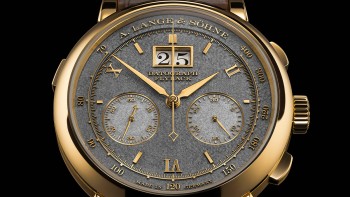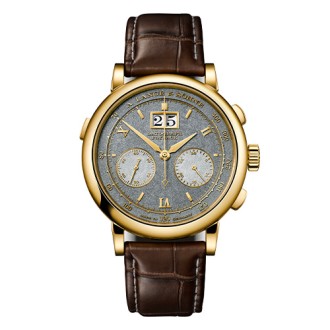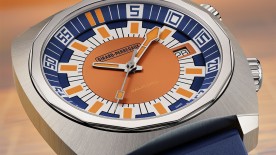Creating a 100% in-house chronograph is a far more complex undertaking than it might seem. While chronograph complications are widely available thanks to reliable, low-cost generic movements flooding the market – from manufacturers like ETA, Sellita and Soprod – few watchmakers have their own chronograph calibre. A. Lange & Söhne joins the ranks of Breguet, Parmigiani Fleurier, Patek Philippe and Vacheron Constantin in this elite group.
Development of this in-house chronograph came relatively early in A. Lange & Söhne’s renaissance. Following the brand’s return to the watchmaking scene in 1990, and the release of its first creations in 1994, the Datograph arrived in 1999. It remains in the current collection, having passed through several iterations. The original L.950 calibre has now become the L.951.8, which powers the newly unveiled Datograph Handwerkskunst.

A house tradition
This highly limited series continues A. Lange & Söhne’s tradition of occasionally offering anniversary editions of current models with special finishes. Today, there are eight A. Lange & Söhne Handwerkskunst models in existence across all collections, dating back to 2011. That includes the latest Datograph Handwerkskunst.
The piece’s uniqueness lies in its decoration, with the dial treatment immediately catching the eye. The tremblé finish, while not entirely new to A. Lange & Söhne (it featured on an 1815 Tourbillon in 2015), is particularly striking.
Tremblé is a manual hammering technique created when the artisan punches a series of tiny crevices into the dial’s surface by hand, creating a subtly grained appearance that plays with the light. While purists may draw a distinction between the techniques of tremblé, martelé and grené based on the depth of the incisions, the terms are often used interchangeably in horological literature.
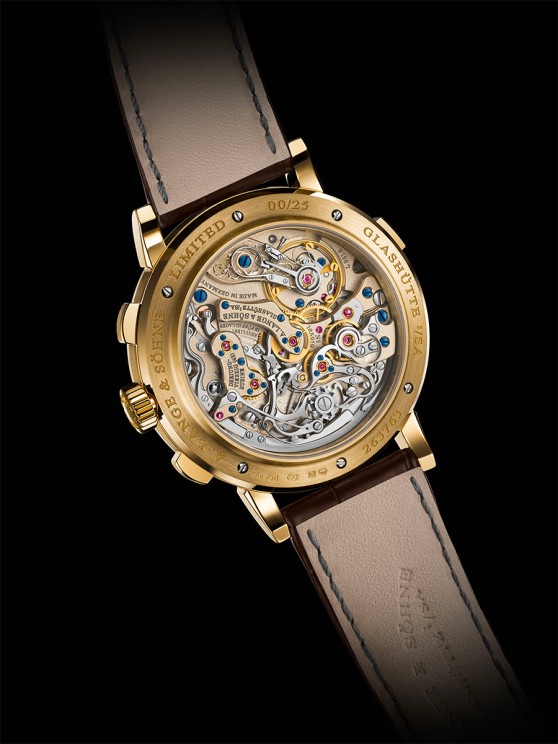
100% handcrafted excellence
While this process isn’t new, it is rare for it to be executed entirely by hand. Martelé finishes are often produced by laser or machine (Audemars Piguet’s Frosted Gold finish is now created mechanically). Only a handful of watchmakers still execute this technique by hand, among them Ferdinand Berthoud and Moritz Grossmann (located just 900 metres from the A. Lange & Söhne manufacture). The engraver works the base material using a specially made flat-toothed burin to achieve a fine-grained surface. The challenge lies not only in creating a homogeneous texture on such a small surface, but also in preserving the integrity of the dial elements such as the arched logo, the minute and hour markings and the tachymeter scale.
The movement remains quintessentially A. Lange & Söhne, with the exception of the balance cock which, following Dresden’s local tradition, is richly engraved. The Datograph Handwerkskunst features an intricately executed floral motif, where the surrounding material has been hollowed out to allow the engraving to sit flush with the surface, creating a relief rather than an engraved effect.
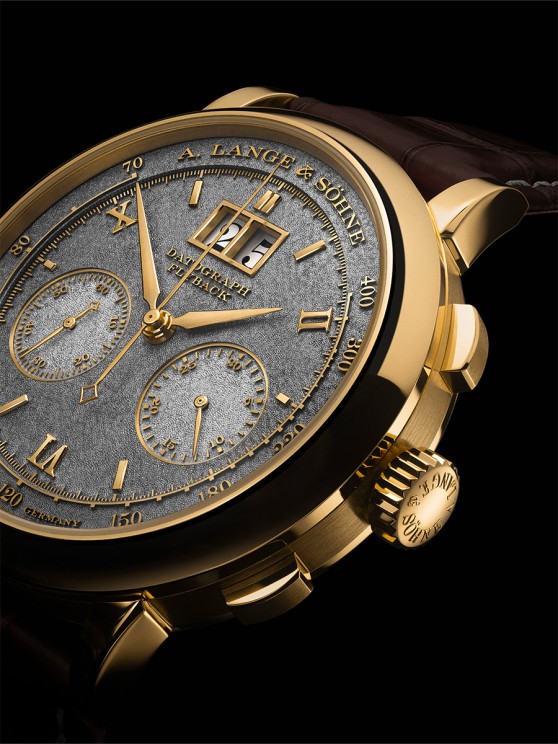
Just 25 of this exclusive timepiece, in a 41 mm yellow gold case, will be produced. They will be available only through A. Lange & Söhne boutiques.
